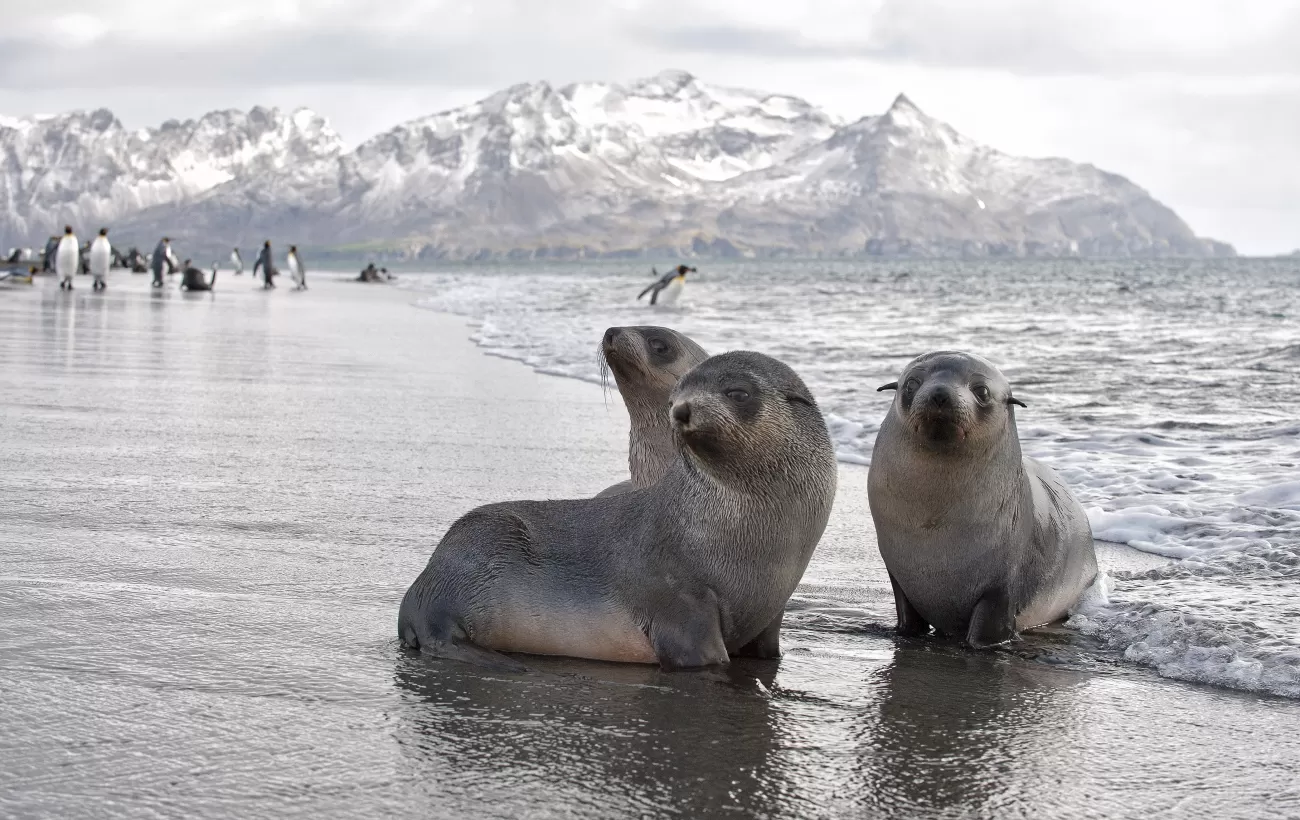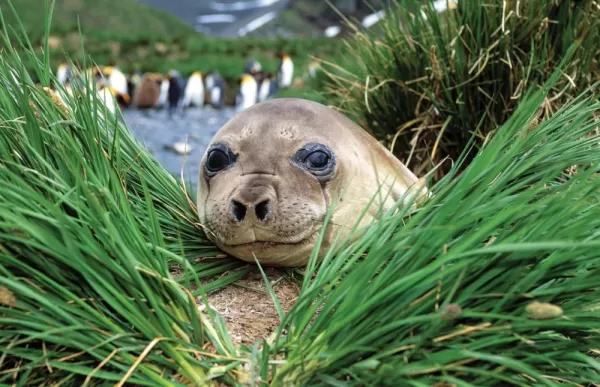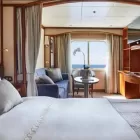- Ship
- 5 Breakfasts, 5 Lunches, 5 Dinners
While sailing to Antarctica, every turn can reveal a new and breath-taking adventure. As the pack ice becomes thicker, it’s apparent to everyone that you are moving closer into Antarctica’s vast white wilderness. The further south you go the more you can find ice. Remote and otherworldly as Antarctica is, the spectacular iceberg sculptures and calving glaciers are irresistible. The possibility of up-close encounters with marine mammals, watching seals sunbathing on slow-moving ice floes or humpback, Minke, and orca whales surfacing from below the frigid waters are truly unique.
Enjoy daily Zodiac departures, and, if conditions permit, cruise amidst colorful icebergs or step ashore to visit a variety of penguin rookeries and perhaps scientific research stations on complimentary excursions led by your team of natural history experts.
The flexible itinerary allows to opportunity to take advantage of favorable sea and weather conditions. In the true spirit of expedition cruising, each day the Expedition Leader and Captain determine your best course depending on weather, ice conditions and wildlife you may encounter. Here are some of the places you may visit:
Start your Antarctic experiences at the top of the Antarctic Peninsula, venturing into Antarctic Sound and its magnificent array of tabular icebergs, historical sites and Adelie and gentoo penguin rookeries. Depending on weather and ice conditions Silver Explorer might visit Brown Bluff, Hope Bay, and Paulet Island and cruise the Antarctic Sound.
Brown Bluff is an ice-capped, 745-metre-high, flat-topped mountain with a prominent cliff of reddish-brown volcanic rock. Adelie and gentoo penguins, kelp gulls, and Cape pigeon use this as a breeding area. Under good climatic conditions a walk onto a nearby glacier might be feasible.
Hope Bay has one of the largest Adelie penguin colonies in Antarctica and a Zodiac cruise past the Argentine Station “Esperanza” shows some of the penguins, Weddell seals and blue-eyed shags.
Paulet Island is home to Adelie Penguins, kelp gulls and snowy sheathbill as well as a massive colony of blue-eyed shags. The crew of Otto Nordenskjold’s relief ship Antarctica had to over-winter on the island in 1903. Remnants of their hut still remain.
Cuverville Island's large bare rock areas provide nesting sites for gentoo penguins. snow petrels and Cape petrels may also be seen whilst Wilson’s storm petrels nest in the higher scree of the island. Conditions permitting climb part of the hill for spectacular panoramic views. During Zodiac tours around the many icebergs, hauled-out Weddell seals may be seen.
Paradise Bay is well named for its spectacular scenery of mountains, glaciers and icebergs. From the ship or Zodiac, observe Argentina’s “Base Brown”, one of many Antarctic research stations. View the wildlife from sea level while cruising by Zodiac. There’s a good chance you can come across a crabeater seal relaxing on an ice floe or locate minke whales in the bay.
Lemaire Channel is one of the most spectacular channels with steep snow-covered mountains on both sides and icebergs of different sizes at the southern end.
Petermann Island is named for German geographer August Petermann and was first discovered by a German expedition in 1873-74. Rock surfaces show glacial polish, some glacial grooving and nice samples of frost shattering. During your landing, be able to observe rookeries of Adelie penguins, gentoo penguins and blue-eyed shags.
Pleneau Island lies at the south end of the Lemaire Channel, and was first explored during Charcot’s 1903–05 French Antarctic Expedition. The island was named for the expedition’s photographer, Paul Pleneau. Amongst the common breeding birds are gentoo penguins, kelp gulls and south polar skuas. Southern elephant seals are often hauled-out in wallows. Enjoy spectacular glacial and ice scenery from the island during a Zodiac cruise in Pleneau Bay.
Attempting the Antarctic Circle crossing. On your way south pass Vernadsky, the former British Faraday Station, and see how far you can sail based on the ice conditions.

























